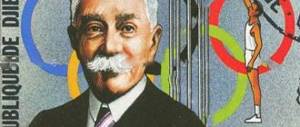History of computer games
So, the world's first computer game was the Carthrabe-ray amusement device rocket simulator, created in 1942 by Thomas Goldsmith the Younger and Eastle Ray Menn. The patent was applied for on January 25, 1947, and received number 2,455,922 on December 14, 1948. In 1952, OXO, a program simulating the game of tic-tac-toe, was created by A. S. Douglas as part of his doctoral dissertation. at Cambridge University. This computer game was programmed on an EDSAC computer, the image on which was formed using cathode rays.
Difficulty systems in computer games
Difficulty systems in games can be divided into 3 categories:
easy , medium and hard .
"Easy" is common in shooters and other action games: most often, increasing the difficulty means increasing the number of enemies on the screen, the amount of their health, and the damage they do to the main character when hit.
Average . This level of difficulty is different, let's reduce everything described above. The AI of enemy NPCs becomes a little smarter. One of the most frequently selected game modes. Because already playing at an average difficulty level, attention and reaction are most often required. Depending on the game of course.
A “complex” system works more subtly. For example, in a tactical game, the choice of difficulty determines the behavior of the artificial intelligence. At a higher difficulty level, opponents behave more cunningly, more often use cover, grenades, traps and force the player to think about every move, not allowing them to simply throw hats at themselves.
Arcade
Arcade is a genre of computer games characterized by short but intense gameplay[1].
In the strict sense, an arcade game is considered to be a game for arcade slot machines. Also called arcade are games that are ported from an arcade machine[1].
The heyday of arcade games dates back to the late 1970s through the mid-1980s and is called the golden age of computer arcade games.
The name "arcade" comes from the English. arcade - a passage, a covered gallery of shops where arcade slot machines were traditionally located[2].
Strategy is a genre in which the key to achieving victory is planning and strategic thinking. The player controls not just one character, but an entire department, enterprise, or even a universe.
Adventures
Adventure is a narrative game in which the player-controlled hero advances through the story and interacts with the game world through the use of objects, communication with other characters and solving logical problems.
Role-playing games
Characteristic features of a role playing game (RPG):
- The main character (heroes) and other characters and enemies (usually to a lesser extent) have a number of parameters (skills, characteristics, skills) that determine their strength and abilities. Typically, the main characteristic of characters and enemies is level, which determines the overall strength of the character and determines the available skills and pieces of equipment. All these parameters must be improved by killing other characters and enemies, completing tasks and using these same skills.
- There is a well-developed and extensive world, a strong storyline, branched dialogues with different answer options, and many different characters with their own goals and personalities.
- A large number of different items: equipment, potions, artifacts, etc. And my game was created on an engine that supports the Role-playing games genre.
Famous computer games
For many years, computer games have been the main engine of progress in both central processing units and graphics subsystems. But recently, the pace of growth in computing power and the implementation of new features has slowed down significantly.
Probably the whole point is that the vast majority of gamers are quite satisfied with the current quality and realism of game graphics. Let's look at how graphics in games have changed over 45 years.
Let's start with some well-known game Duck Hunt, which means duck hunting.
Duck Hunt (1984) Another iconic game. Duck Hunt slot machines and Nintendo Entertainment System consoles (manufactured until 1995) were equipped with pistols that worked on the “light pen” principle. On the screen, ducks were flying out of the thickets, which had to be shot with a minimum number of misses.
And the dog happily grabbed the prey. If desired, you could switch to the skeet shooting mode. In terms of sales, the game ranks second on the NES platform - 28 million copies. Another well-known game is Super Mario Bros.
Super Mario Bros. (1985) Four years after the release of Donkey Kong, an Italian plumber with no fear of evil primates began to conquer the world. In this arcade game you had to control a mustachioed plumber, Mario, wearing overalls and a cap, and his brother Luigi.
While traveling around the world, you had to evade enemies or defeat them by jumping on their heads, and also collect hidden coins along the way. The goal is to reach the end and save the princess.
This game was included in the Guinness Book of Records as the best-selling game in history - 40 million copies. In fact, few other game characters can compete with Mario in terms of recognition. The echoes of Mario's popularity war still linger in popular culture.
Probably everyone remembers games like Sonic the hedgehog, Sonic Adventure, etc. Now we will talk about the game Sonic the hedgehog.
Sonic The Hedgehog (1991) In the early 1990s, this game was the face and icon of Sega consoles in post-Soviet Russia. A piece of the gameplay was demonstrated in television advertising, and it was very cool and colorful, where are the Chinese clones of Dendy.
Of course: 16-bit Sega was head and shoulders above the quality of graphics and special effects than 8-bit Dendy. The main character of the game is the jet hedgehog Sonic, charged with incredible adrenaline, who was driven by the thirst to find the villain named Dr. Eggman, a scientist who imprisoned animals inside robots and stole the magical Chaos Emeralds.
And finally, the majestic Mortal Kombat (MK). The well-known wrestling simulator is what we will talk about.
Mortal Kombat (1992) This is one of the best fighting games in history, which actually set a new bar for the quality of animation, variety of combo attacks, and at the same time poured tons of blood on the players. The game was originally developed for slot machines, but was ported to set-top boxes and personal computers (the graphics were better there). Mortal Kombat had many playable characters that fought between them.
Each character had their own cunning techniques, their own strengths and weaknesses. The game turned out to be incredibly entertaining, playable and bloody. During our fights, so much adrenaline splashed out, as if we were fighting each other in the ring. It's truly epic, there's no other way to put it. An excellent means of relaxation after a hard day, like all games in the Mortal Kombat series. By the way, you will be surprised, but this fighting game even has a storyline.
Project "Computer games: benefit or harm?"
KSU "Secondary school No. 2"
Computer games: benefit or harm?
Introduction
Not so long ago, no one could have imagined that a computer would enter almost every home. It was mastered not only by employees of banks and various offices, but also by other segments of the population, most of whom are children. The computer has given us all great opportunities: preparing essays on various topics when preparing homework, communicating through websites, storing various information, entertainment in the form of computer games.
But along with the benefits, the computer has also introduced negative aspects into our lives. Many schoolchildren began to spend a huge amount of time at the computer, not noticing anything around them. The computer replaced their communication with friends, activities in hobby groups, and simply reduced the time for preparing homework. Parents are often at work all day and cannot control the time their children spend on the computer and the games their children play. On store shelves you can find a huge variety of computer games.
What games do schoolchildren prefer, and how much time do they spend at the computer? In general, are computer games good or bad? These are the questions we asked ourselves when doing this work.
Almost every child between the ages of 10 and 16 has tried playing a computer game at least once. Boys play computer games much more intensively than girls.
The most common are: games of skill and computer versions of sports games; logic games are the least common. An alarming signal is the increasing spread of games with aggressive content, as well as those preaching violence and racism.
The distribution of certain computer games is closely related to their preference among teenagers. Games that require dexterity and sports have the highest ratings; then there are “fighting” games, as well as games with elements of violence.
Since the beginning of the 80s. Computer games are becoming part of the entertainment industry, which captivates a large number of people, mainly children and teenagers. Society greets the new hobby ambiguously: against the backdrop of admiration for the capabilities of the computer, there is wariness, and in some cases, outright condemnation. A large number of messages appear in the media warning about the dangerous influence of the computer in general and computer games in particular on the psyche of adolescents. It has been suggested that working with a computer is a kind of addiction, which is expressed in such psychopathological symptoms as a teenager’s inability to switch to other entertainment, a feeling of imaginary superiority over others, the so-called “master of destinies” syndrome, which a player acquires by managing “life” computer characters. There is also such a danger as “duping” a teenager, impoverishing his emotional sphere, since a player, if he wants to win, must constantly suppress his feelings and remain cool-headed. Some computer games provoke aggressive behavior, glorification of wars and violence. There is evidence that subjects who played a virtual game experienced significantly stronger physiological arousal, as well as a greater number of aggressive thoughts, compared to the control group.
While studying the literature on this topic, I planned to answer the following questions:
- What impact do computer games have on a schoolchild?
- What games can you play?
and which ones are not allowed and why?
- What dangers does the virtual world pose?
Purpose of the study:
- to figure out
positive and negative aspects of the influence of computer games on humans
- answer the question:
Are computer games good or bad?
Research objectives:
- find out what benefits and harm computer games have for children.
- find out what dangers the virtual world is fraught with?
- find out what computer games our school students prefer to play;
- prepare a booklet - a reminder;
Research hypothesis:
Let's pretend that
playing computer games is bad
,
as it is harmful to human health.
Maybe,
playing computer games is good, as games develop children.
In order to test my assumptions, I decided to use the following research methods: theoretical research, student surveys, conversation and observation
.
Together with my supervisor, we drew up a work plan:
1.Find and study in literature and the Internet:
- what computer games exist and what impact they have on children;
- what is “computer addiction” and what dangers are fraught with the virtual world;
- What rules should children follow when working at the computer?
2. Conduct a survey among classmates in order to find out what games they like to play and their attitude towards computer games.
3. Analyze the collected information.
4. Publish a short book on the research topic.
5. Make a presentation based on the collected material.
After completing the project, students will be able to:
- evaluate the usefulness of computer games;
- choose games that develop thinking, logic, and small hand muscles;
- talk about the need to follow the rules of safe behavior at the computer to your loved ones and acquaintances;
Experts distinguish the following types of games:
- Educational and developmental games
Educational and developmental ones are very informative: they help to gain knowledge about the world around us, teach them to write and count. There is a development of creative abilities and thought processes. Accompanied by a cheerful children's melody or song, they lift your spirits.
- Adventure Games
These are games based on cartoon films. They are very colorful and emotional, but here you also need to be on guard. It turns out that light flickers on the display impose their rhythm on the cerebral cortex, causing convulsions.
- Strategies
They form an internal plan of action, develop memory, thinking, and imagination. But such games are especially dangerous for children. The child’s psycho-emotional arousal increases with each level, leading to increased blood pressure, rapid heartbeat, increased adrenaline levels in the blood, requiring physical release, often with an aggressive focus towards
to others.
- Games like “Kill them all!”
These are games with warlike plots, pools of spilled blood and mountains of corpses. Naturally, all this provokes outbursts of anger, evil and violence in children. And a child carried away by the game, “living” several dozen lives a day, loses respect for his own, losing the instinct of self-preservation and dulling the sense of danger.
Thus, after analyzing the types of computer games, positive and negative factors of the influence of games on humans were identified:
Positive aspects of computer games:
- develops logic, thinking, memory,
- generates positive interest in technology;
- develops creative abilities;
- forms psychological literacy for PC mastery;
- develops imagination by modeling the future;
- fosters attentiveness, concentration, and determination;
- helps to master reading, writing, etc. at a fast pace;
- trains memory, attention;
- develops speed of action and reaction;
Negative aspects of computer games:
- has a negative impact on physical development;
- increases the state of nervousness and fear when striving to achieve victory at any cost;
- the content of games provokes children's aggression and cruelty;
- obliges the child to act at the pace set by the program;
- promotes the development of physical inactivity;
reduces intellectual activity;
- impairs vision.
The greatest harm of computer games lies in the same thing as its advantage - its endless fascination.
Why do all the kids love playing computer games so much?
I think because:
- It's always bright, beautiful and simple!
- Everything happens according to your desire;
- You can be the main character, control destinies;
- The computer is a wonderful communication partner;
- Games can be easily changed;
- Mistakes can always be corrected;
Every person who is passionate about computer games constantly has a question: what to choose: the virtual or the real world?
A person himself makes a choice: a full life - or a picture on the monitor screen that can go out with him.
To make it easier to make a choice, follow these simple rules:
1. Be sure to engage in some active sport.
2. Play according to the principle “I’ve played and that’s enough” - no more than one hour
in a day.
3. Always remember the wisdom: “Everything is allowed to me, but not everything is useful.”
After theoretical research, I conducted a survey among the students of our school; children from the junior level and several children from the senior level took part in the survey. In total, I interviewed twenty people.
I asked each of them three questions:
- Do you play computer games?
- How much time a day do you spend playing on the computer?
- What computer games do you play?
The results of the questionnaire showed that all the guys play computer games, the good news is that not very often and not very much. But these same results also showed that the guys mostly play action films. And this is not very pleasing.
Scientists have proven that computer games affect a person’s physical and mental health.
During the research process, I came up with the idea to conduct an experiment:
how a person’s heart rate will change after playing on the computer for some time.
We sat the kids down to play different games: intellectual, shooter, adventure, strategy, after first measuring their pulse. Then the guys played games for 15 minutes, we measured their pulse again. Here's what happened:
If you analyze the data obtained, you will notice an interesting fact: the heart rate increased in all subjects, except for the one who played adventures. Could this be related to the nervous system of the subject himself?
The results of the study showed
that all the guys love to play computer games. Most people don’t think about the dangers and benefits of these games, or how much time they can play.
My assumptions were not confirmed. This is not to say that computer games are bad and we should give them up. It’s impossible to say that it’s good, and you can play as much as you want and in any games. The influence of computer games on children is controversial. Some people develop logical thinking, others forget about the real world around them. Here you need to adhere to the main principle - do no harm.
. A computer, like everything that surrounds us, can be both useful and harmful. I think that my work was useful both for me and for the guys who are interested in computer games.
Conclusion
Having done this work, having studied the issue of the impact of computer games on the health of schoolchildren, we would like to appeal to parents: supervise your children when they work on the computer. Monitor the time and games your children play. Passion for a computer can displace simple communication with peers, passion for other hobbies from a child’s life, and reduce school performance, since time on the computer passes very quickly, before the child has time to look around, it’s already evening, he is tired, his homework has not been completed, it’s time to sleep. Working at a computer for a long time affects a child's health. At the same time, they become very tired, have difficulty falling asleep, sleep anxiously, mental fatigue sets in, causing neuroses and associated irritability, rudeness, and absent-mindedness.
The problem of addiction to computer games has now begun to be widely raised by psychologists and educators. An entire classification of games, mechanisms for the formation of psychological dependence on computer games, and the dynamics of the formation of gaming addiction have been developed.
Creation of a computer game
To create a game we will need:
- Computer or laptop.
- RPG Maker MV program (you can either buy it on the Steam website or download it on the Internet).
- Any browser Yandex, Chrome, Opera (Gx) is not necessary. (For sprites in the game).
- Special computer skills.
- And, of course, patience (patience and work will grind everything down!).
Launch the RPG Maker MV application. In the upper left corner there will be an inscription “File”. Six lines with inscriptions will appear, we need a line with the inscription “New project”, then we will need to indicate the purpose of the folder in which the files for the game will be downloaded, indicate the name of the game and the folder with the game. You'll have to wait for the download.
Creating a character in the game
To create a character, you need to click on the character generator button, it looks like this:
Afterwards, a window with parameters will appear, select the parameters and click on the face button, which is located below the parameters. A window appears in which there are two inscriptions “Import” - “Export”, click export and you will immediately find a folder, click save. We do the same with the “Character”, “Knocked Out” and “Fighter” buttons.
Then we find the tools button in the initial menu and click on the “Database” inscription. Afterwards, you can change the number of characters in your squad using the “Change maximum” button. Then you can change the name or nickname, class and description, from initial to maximum level.
And under them is “Graphics”, click on the “Face” button and select the one you created, do this with the rest of the buttons. (“Character”, “Fighter”).
Creating treasure or doors
To create a treasure or doors, you need to click on an empty square cell, but before that you need to select the “Events” mode, it is located on the same line as the “Character Generator”. After clicking, a menu appears, hover the cursor over the inscription “Event Templates”, a window appears on the right with the inscriptions “Movement”, “Door”, “Treasure” and “Hotel”.
We select either the treasure or the door, if the door a window appears where you can change the picture of the door and the location where it will be located. But in order for the door to send you to the desired point, you need to double-click on the door with the left mouse button, then there will be inscriptions in the middle, look for the last line and right-click on it and click on “Edit”, then click on the button under the word “Specified” and we choose where to send the character.
But with a treasure everything is much simpler! Click on “Treasure” and then a window will appear where you can select a picture of the chest and the things that will be there. Then click “Ok”.
Create a message
To do this, you need to double-click the left mouse button on an empty cell, but before that you need to select the “Event” mode, then a window will appear and by double-clicking with the left mouse button on the line in which the diamond is located, another window appears in which we look for “Show message", then enter the text and select a picture. All is ready.
Creating a Battle
You need to do the same as in creating a message, but instead of “Show message” you need to select “Battle” in the third tab and create an enemy for yourself, after that you can select the enemy’s picture and change the trigger to “Touch event”, and the movement to "Move towards the player". So, in addition, you can make an NPC that will move towards the player.
Additional Information
And then you can find out the rest of the information on the website. It tells everything in detail how to make the game even cooler! Or enter on the YouTube website: Natatem00. It works with different engines such as Unity. Thus, he helps beginners work on games.
Quiz
First question: In which difficulty mode do NPCs (characters) become a little smarter? a) In complex. b) In the lung. c) Expert. d) On average.
Second question: What was the first game in the world a simulator of? a) Rockets . b) Machine. c) Airplanes. d) Shooter.
Third question: Which game made history in fighting games? a) Duck Hunt. b) Sonic The Hedgehog. c) Minecraft. d) Mortal Kombat .
Fourth question: What genre is the game I created? a) Shooter. b) Simulator. c) Role-playing games (RPG) d) Arcade.
Fifth question: Is it bad to create games? a) Yes, bad! b) No, good!
Sixth question: What is the name of the engine I'm working on?
a) RPG Maker Ace.
b) RPG Maker MV.
c) Unity.
d) Game Engine.
Seventh final question: In what year did the very first computer game appear?
a) 1942. b) 1875. c) 1907. d) 1941.
Conclusion
Games are not very difficult to create, and even simple! Anyone can create a game and be successful in anything else, you just have to believe and try, no matter what, and then everything will work out! Any activity may not be easy for everyone! But you have to strive for the best and do what you like. Therefore, in my computer science project “Creating your own computer game,” I decided to share the creation of a game with everyone so that they strive to be able to create a game if they can do it and if they like it.
Internet resources were used to write this work.
If you liked the page, share it on social networks:
Project on the topic: “The influence of computer games on primary school children”
PROJECT
Discipline: Computer science and information and communication technologies in professional activities
On the topic: “The influence of computer games on elementary school students”
Author of the work: student of group NK-21 Sharafutdinova L.R.
Scientific supervisor: teacher of computer science and ICT Vedeneeva K.M.
Tolyatti 2016
Project passport
Project name:
“The influence of computer games on primary school children”
Relevance:
Issues of computerization and the impact of computers on human health are one of the important problems of our time. Although a computer makes a person’s life easier, it can at the same time cause serious addiction. When immersed in the virtual world, a person seems to isolate himself from reality and ceases to be interested in his surroundings. Mostly young people and children use computers. Some people use the computer for work, while others use it for gaming. Since kindergarten, children have been playing not with dolls or cars, but with computer games. And, of course, this has a great impact on character, health, relationships with parents and friends.
Project goals:
to study the influence of computer games on the physical and psychological health of primary schoolchildren and to develop an information product that will promote their correct attitude towards gaming activities on a PC.
Tasks:
Study existing information about computer games;
Study and summarize information about the impact of computer games on the brain, health and psyche of children;
Conduct a survey of primary school students on this topic and analyze the results;
Create an information product about the impact of games and show it to children.
Author of the project:
student of group NK-21 Sharafutdinova Liana Rifkatevna
Scientific adviser:
teacher of computer science Vedeneeva Kristina Mikhailovna
Project type:
Educational and research
Academic subject:
Computer science and information and communication technologies in professional activities.
Content
Introduction………………………………………………………………………………………5
What is a computer game?………………………………………………………………………………………. 6
Classification of computer games………………………………………………………8
The influence of computer work and computer games on children……………..10
Recommendations for organizing work at the computer………………………15
Practical part………………………………………………………17
Development of an information product……………………………………..22
Conclusion………………………………………………………………………………….25
References……………………………………………………………26
Introduction
The twentieth century gave many discoveries and technical inventions, one of which is the personal computer with its various capabilities. The positive and negative aspects of this invention can be argued and debated for quite a long time.







